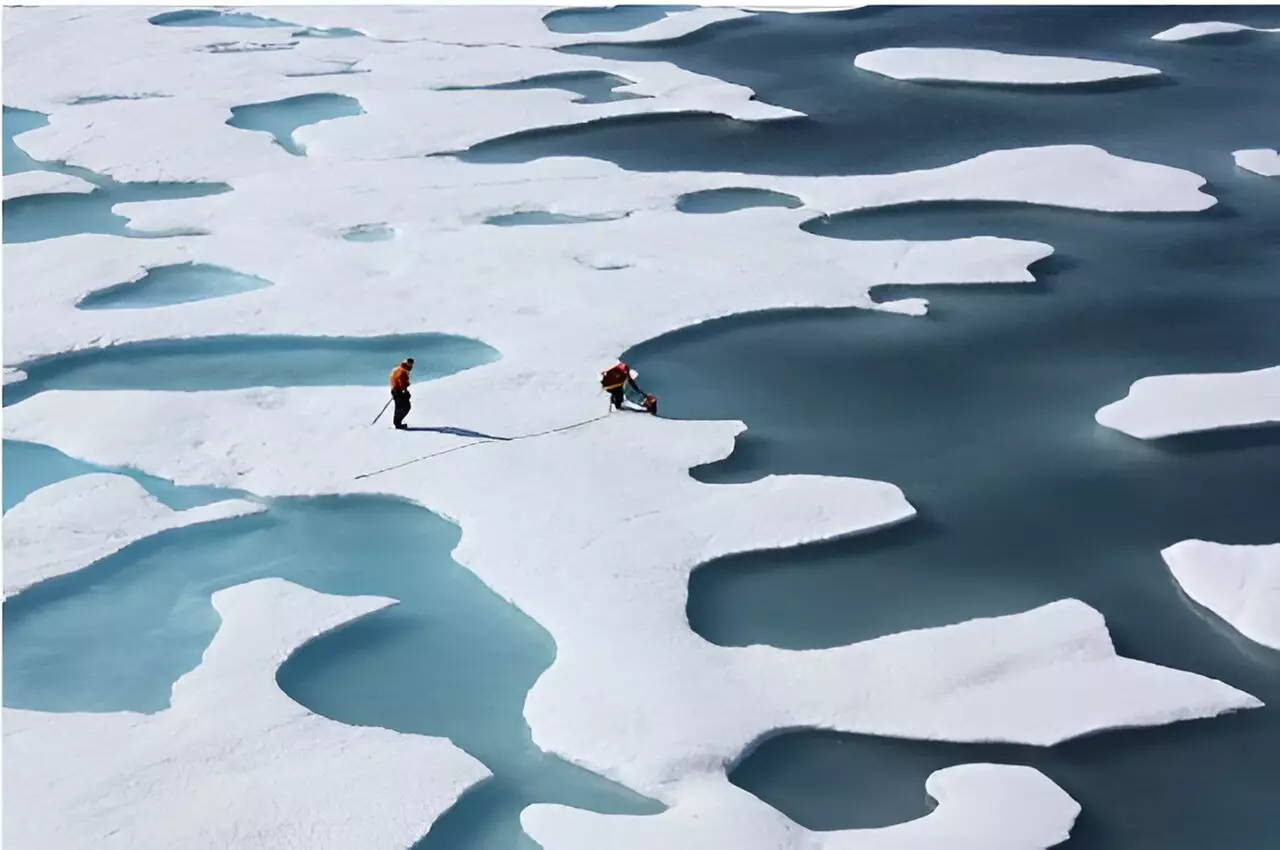The ongoing transformation of the polar regions serves as a harbinger of accelerating climate change. A recent study conducted by scientists from the University of Michigan has unveiled startling findings about the diminishing cooling power of Arctic and Antarctic sea ice—a shift that threatens to escalate global warming. According to their analysis, the Arctic has lost around a quarter of its ability to cool the planet since 1980, while the Antarctic has contributed to a similar loss of up to 15%. This disturbing trend must be viewed as a clear sign that the traditional climate balance is on the brink of collapse.
Lost Reflection: The Mechanism Behind Climate Feedback
Sea ice plays a critical role in regulating the Earth’s temperature by reflecting solar radiation back into space. However, as warmer temperatures dominate, less ice translates to more open water, which is notably darker and absorbs significantly more heat. The study highlights an alarming aspect of this phenomenon: while the total sea ice area has decreased, the decline in cooling power is even more severe—approximately double that of the reduction in ice coverage. This is an essential reminder that focusing solely on ice area can mask the broader implications of how melting ice is altering the climate system.
One of the primary researchers, Mark Flanner, emphasizes that the alarming results may understate the urgency of the situation. “When we run climate simulations, it often takes over a century to truly grasp the impact of melting ice,” he cautions. However, thanks to the wealth of satellite data now available, we can no longer afford to wait; the evidence is clear, and it raises pressing questions about the authority of existing climate models.
A Tale of Two Poles: Divergent Narratives
The Arctic has been the most noticeable victim of climate change, showcasing a steady decline in cooling power. In stark contrast, the Antarctic was historically viewed as more resilient, with sea ice cover relatively stable up until 2016. The dramatic events of that year—when a substantial area larger than Texas melted off one of Antarctica’s largest ice shelves—challenged this assumption. The decline did not stop there; subsequent years have seen a concerning reduction in the region’s cooling effectiveness, indicating that global warming isn’t just an Arctic issue anymore.
The fallout from these changes is significant. Researchers now assert that 2016 onwards has been characterized by the weakest global sea ice cooling effect since the early 1980s. This loss of cooling efficacy directly translates to warmer global temperatures, which is a daunting takeaway for climate policymakers who are charged with addressing these urgent concerns.
Reflective Resilience: The Impacts of Thinner Ice
As ice diminishes, its intrinsic qualities are also changing. Thinner, wetter ice and pools of melted water are becoming more common, converting once-reflective surfaces into absorbent ones. Notably, the summer sun now strikes much of the ice cover directly, enhancing warming and eliminating chilling effects to an even greater degree. This represents a perilous tipping point, especially in the Arctic, where the intensity of solar radiation received is critical for maintaining cooling power.
Such developments are not merely academic; they pose real risks to global climate stability. According to Alisher Duspayev, a lead researcher of this study, neglecting these changes in the Antarctic’s radiative impact could result in significant underestimations of global energy absorption—upgrading the melting ice’s feedback effect by a staggering 40%. This lack of accounting threatens to misinform climate adaptation strategies and policies aimed at mitigating climate impacts.
The Call to Action: Urgency in Climate Planning
In light of these revelations, the research team is eager to share updated figures illustrating the cooling power of sea ice. Making this information accessible through a regularly updated website reflects the urgency with which these findings should be treated. As Aku Riihelä points out, “Effective climate change adaptation planning must incorporate these updated estimates, as the loss of cryospheric radiative cooling could reshape the entire global climate system.”
Ultimately, our collective response to these scientific insights will determine not only the fate of polar ecosystems but also the trajectory of global climate dynamics. The call for immediate action could not be more critical in the face of such daunting evidence. The darkness is closing in, and now is the time for humanity to illuminate a path toward sustainable solutions that confront this pressing crisis head-on.

